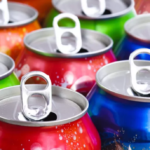
 Note: Today’s post is part of our “Editor’s Choice” series where we highlight recent posts published by our sponsors that provide supply chain insights and advice. This article is from Chetan Chaudhari at GEP and examines the ongoing aluminum can shortage.
Note: Today’s post is part of our “Editor’s Choice” series where we highlight recent posts published by our sponsors that provide supply chain insights and advice. This article is from Chetan Chaudhari at GEP and examines the ongoing aluminum can shortage.
This shortage is the culmination of various ongoing issues – geopolitical tensions related to the Russia-Ukraine war, the rapid shift in consumer buying behavior and container freight availability.
Beer and food industries are particularly affected by the shortages of aluminum cans as most customers prefer take-home packaging. This shortage and sudden uptick in demand weren’t something that most can manufacturers were prepared for. Continued scarcity and overbuying have led to a perennial shortage.
What Caused Can Supply-Demand Mismatch
Aluminum is preferred in various industries due to its lightweight and high recycling rate. However, the production of aluminum is electricity-intensive. For reference, the production of 1 ton of ingot takes about fourteen megawatt-hours of energy – typically enough to power a mid-size home for a year.
The deepening power crisis has already taken 900,000 tons of smelting capacity offline in North America and Europe. With more than a third of global smelters losing money, there is a risk of 1 million tons of capacity being curtailed in the near future.
About 73% of the aluminum cans in the US come from recycled scrap. This mismatch in demand and supply as well as decreasing recycling rate over the years has further complicated aluminum can production. For instance, the recycling rate in California for cans made from aluminum has fallen to a mere 20% from 91% in 2016 and 73% in 2021.
Amidst this shortage, major can makers in the US have instituted a minimum size for their orders. Many breweries were also reported to be paying premiums to purchase cans just to meet their immediate needs. Beer manufacturers like Heineken are already passing on the cost to end consumers after prices of aluminum hit an all-time high in 2022, while companies like Karl Strauss are cutting down on their special releases and seasonal beer to ensure optimal can inventory.
Turnaround for shrink-sleeve cans has grown to 4 to 5 weeks from 4 to 5 days as domestic manufacturers are unable to cover surging demand. Import activity for aluminum cans has also drastically picked up in the last few months, however prevailing power curtailments in Europe and China continue to remain a bottleneck for a steady supply of cans from the international market into the US.
What’s Next?
Supply continues to remain constrained due to limited production activity globally. Alumina precursor to primary aluminum also continues to remain in short supply due to issues related to power rationing in China deeply affecting the can market in the US.
As the US and Europe enter peak winter season in Q4, issues on the energy front are expected to be more severe. More smelters are expected to curtail operations leading to reduced supply in the market.
To read the full article, click HERE.
The post Editor’s Choice: Aluminum Can Shortage Defines a New Normal for Food Packaging appeared first on Logistics Viewpoints.
